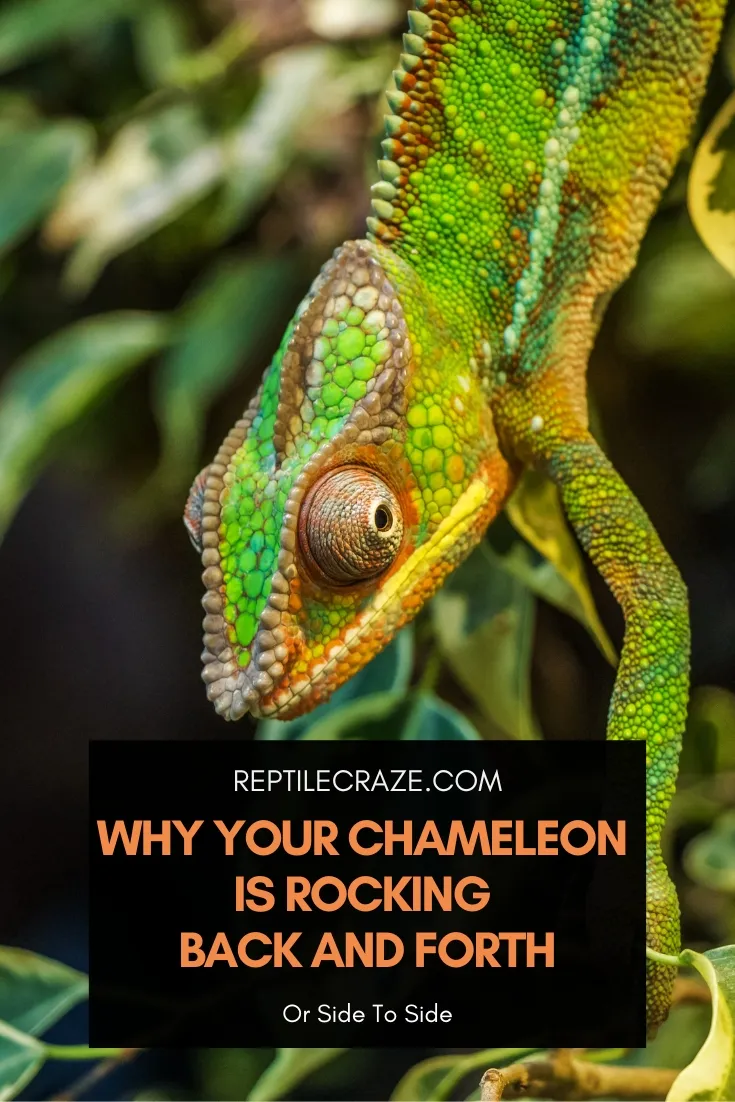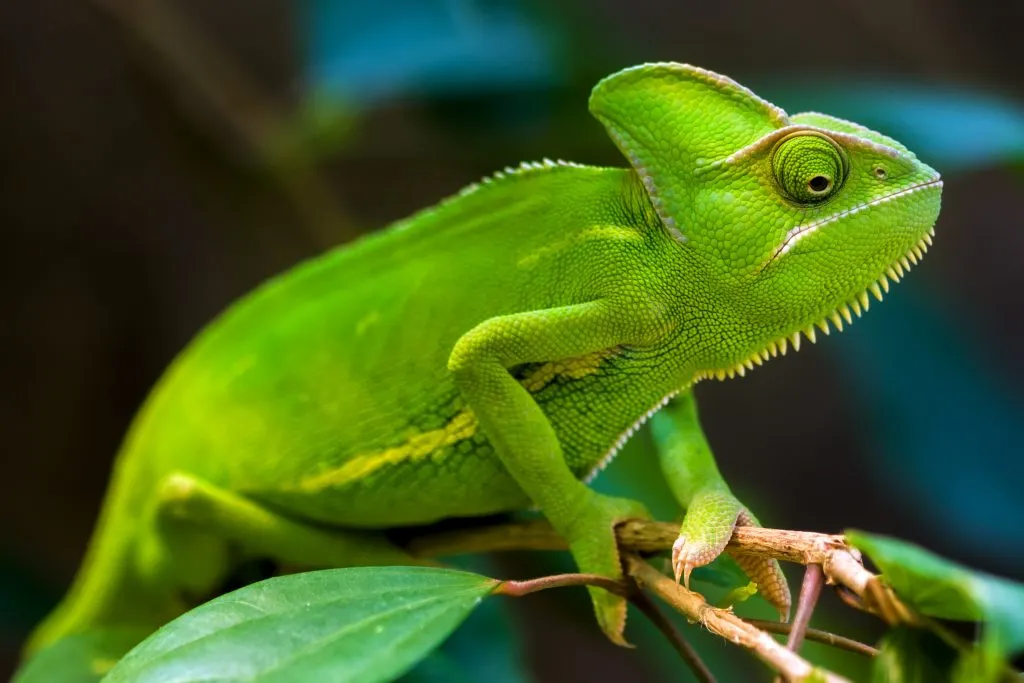
Have you seen your chameleon dancing? We usually see this little dance when they walk or climb. What does it mean when chameleons rock back and forth? Is it normal for them to walk like that or should it be a cause for concern?
Chameleons rock back and forth when they walk as mimicry of the leaves swaying in the wind. They do this to hide from predators and as a tactic in hunting prey. Further, they do this to compensate for the lack of stereoscopic vision when both eyes are focused on different areas.
In this article, we are going to discuss the reasons why your chameleon is rocking back and forth when it is walking or climbing. We will also bust some myths that have to do with how they move. Read on to find out more!
Table of Contents
Reasons Why Chameleons Rock Back And Forth When Walking
It is so cool to see your chameleon as it rocks back and forth when they walk. All that is lacking is classical music playing in the background to complete their elegant walk.
For first-time chameleon owners, it may cause some panic as it may seem that the chameleon is not walking properly. The truth is, this “dance-like” movement is a natural behavior of chameleons. Here are the reasons.
1. Chameleons Mimic The Swaying Of The Leaves With The Wind
In the wild, chameleons are not at the top of the
Due to their biology, they are not equipped to deal with bigger predators such as birds, snakes, and other bigger lizards.
In order to cope with this, chameleons rely on their ability to blend with their surroundings and employ tactics to hunt for prey.
Tip: If you are unsure if your chameleon is healthy, read our article on that here!
One of these tactics is mimicking how the leaves naturally sway with the wind. As chameleons go from one place to another, it does so undetected by rocking back and forth while walking and blending with the movement of the leaves.
In doing so, it can go to different places without alerting or being seen by a potential predator. Evolution also aided in this regard such that the lower body of chameleons resembles the patterns of leaves.
This is deeply ingrained in chameleons that they also do this in captivity albeit lacking predators or wind blowing on the leaves.
On the other hand, they do not only mimic the sway of the leaves solely as a defensive mechanism. They also do this to catch their prey.
In the wild, chameleons blend with their environment and let their prey pass by, before unleashing their long tongues to capture the prey.
Chameleon Myth: “Chameleons have two toes on their feet.” The truth is, they have three toes that are grouped. For the front legs, the toes are seen at the outer side while the toes on the hind legs are in the inner side.
2. Chameleons Lack Depth Perception
There is still an ongoing debate among scientists on whether chameleons employ tactics to make up for the lack of stereoscopic vision or if they use monocular focusing when they walk or ambush their prey.
There is still no conclusion to this debate so let us discuss them both to know their correlation to the back-and-forth movement of your chameleon while it is walking.
The most popular theory is that chameleons walk back and forth while walking because they lack stereoscopic vision.
Stereoscopic vision is how eyes perceive forms and three-dimensional shapes that help determine depth.
Depth perception is only possible when both eyes move synchronously while focused on the same angle.
The eyes of the chameleon do not work this way. The right eye focuses on the right side, while the left eye is set on the left side. Both eyes provide a 360-degree view.
Therefore, they lack depth perception. In order to make up for this, they rock back and forth while moving for them to gauge the distance of objects around them.
Chameleon Myth: “Chameleons cannot rotate their feet.” They actually have a ball and socket joint in their feet which helps them to rotate their feet.
The other theory is that they rock back and forth while walking not to gauge the distance but to get environmental cues by using monocular focus.
This is when one eye scans an area and focuses on a certain object to get a better view of the environment.
Unfortunately, there is still no research on what is actually happening with the depth perception of chameleons as they rock back and forth, but one thing is for sure, this movement aids them with their vision.
Does My Chameleon Have Metabolic Bone Disease When It Is Rocking Back And Forth?

No. When your chameleon is rocking back and forth while it is walking or climbing, it means that it has good bone health.
It is actually the absence of this motion that signifies that your chameleon may have a metabolic bone disease (MBD).
When your chameleon has MBD, its limbs will bend. Thus, it will not have the capacity to support its body to rock back and forth.
Eventually, your chameleon will give up on walking and will stay put in one area. Other signs of MBD are:
- The jaw and helmet can be bent like rubber aka “rubber jaw”
- Trembling
- Cannot grab branches or vines
- Grabbing of front legs using their hind legs
Wanna know why chameleons curl their tails? Read our article on that here!
The Unique Walk Of Chameleons Is Used In Space
Another proof that the rocking motion that chameleons do when they walk is both a defensive and offensive stance is the fact that it was used by scientists and engineers as a guide on how space robots operate.
You can find in this study how the chameleon walk is perfect for the lack of gravity in space.
It is an interesting take on how the fluidity of motion of a small reptile such as the chameleon can conquer obstructions and challenges that space robots face. Way to go chameleon walk!
Conclusion
The chameleon rocks back and forth when walking to defend itself from predators and at the same time, aid it in catching prey.
There is nothing to worry about when you see your chameleon doing this. Just sit back and enjoy the view!
- Enchi Ball Python: A Unique and Stunning Morph of Python regius - March 27, 2025
- Emerald Tree Monitor: The Enigmatic Green Guardian of the Rainforest - March 26, 2025
- The Egyptian Cobra (Naja haje): A Fascinating Serpent - March 25, 2025
